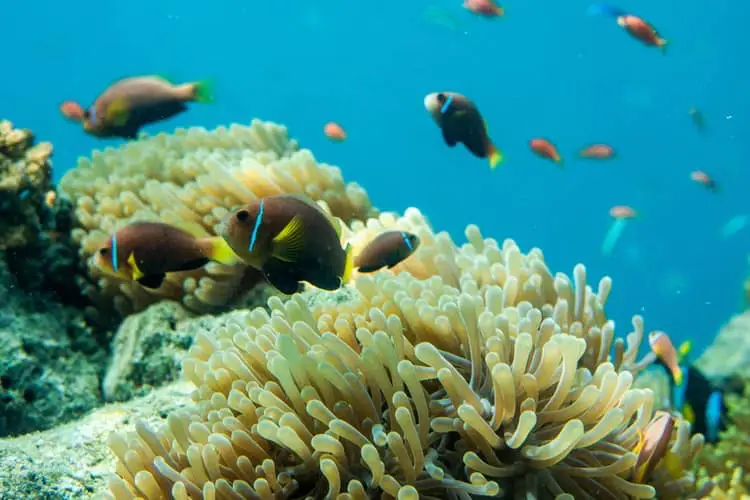When one thinks of the Maldives, images of pristine beaches, crystal-clear waters, and breathtaking vistas often come to mind. This tropical paradise, synonymous with luxury and tranquility, offers more than just picturesque scenery. Beyond its captivating beauty lies a rich and diverse oceanic world, teeming with an array of animals and wildlife waiting to be explored. Welcome to ‘Animals and Wildlife in the Maldives’ – an adventure that takes you beyond the idyllic beaches into the heart of the archipelago’s vibrant marine life.
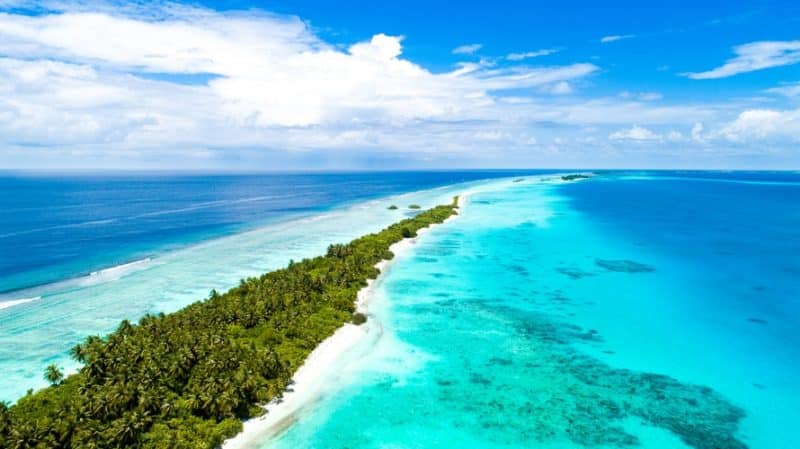
Maldives always surprises tourists with the number of rare wildlife animal species. Learn more about the animals and wildlife in the Maldives here.
Read the entire article or jump to any section you want.
Key Points
| Topic | Key Points |
|---|---|
| Geography | The Maldives is an island nation in the Indian Ocean, consisting of around 1,190 individual islands. |
| Climate | The Maldives has a hot tropical climate with a dry season (November to April) and a wet season (May to October). |
| Culture & History | Maldivian culture is a blend of influences from Indian, Sri Lankan, Malaysian, Arab, Persian, Indonesian, and African sources. |
| Nature & Wildlife | The Maldives features blue oceans, sandy beaches, and rich marine life, including various fish, sharks, rays, turtles, dolphins, and more. |
| Coral Reefs | Coral reefs are the foundation of the islands and house diverse marine life. Conservation efforts are vital. |
| Wildlife Encounters | The Maldives offers opportunities to encounter hammerhead sharks, manta rays, whale sharks, turtles, dolphins, and various fish. |
| Conservation Concerns | The Maldives faces conservation challenges due to climate change, coral bleaching, tourism impact, and resource exploitation. |
About the Maldives
Situated in the Indian Ocean, the Maldives is a unique nation comprised of approximately 1,190 islands, straddling the equator. This makes it one of the most geographically dispersed sovereign states globally.
Renowned for its serene ambiance, the Maldives is defined by its vibrant coral reefs, which not only form the bedrock of the islands but also serve as a natural protective barrier. The preservation of these coral reefs is crucial, as they play a vital role in safeguarding the delicate and picturesque islands that make up this tranquil paradise.
Location & Climate
The Republic of Maldives, often referred to as the Maldive Islands, is an independent island nation nestled in the north-central part of the Indian Ocean.
Characterized by a consistently warm tropical climate, the Maldives experiences two major seasons that dominate its weather patterns. The dry season, extending from November to April, is marked by northeast winter monsoons, offering a period of relative calm and clear skies. Conversely, the wet season, spanning from May to October, brings southwest monsoons, accompanied by stronger winds and increased rainfall, shaping the unique climatic identity of this island paradise.
Culture & History
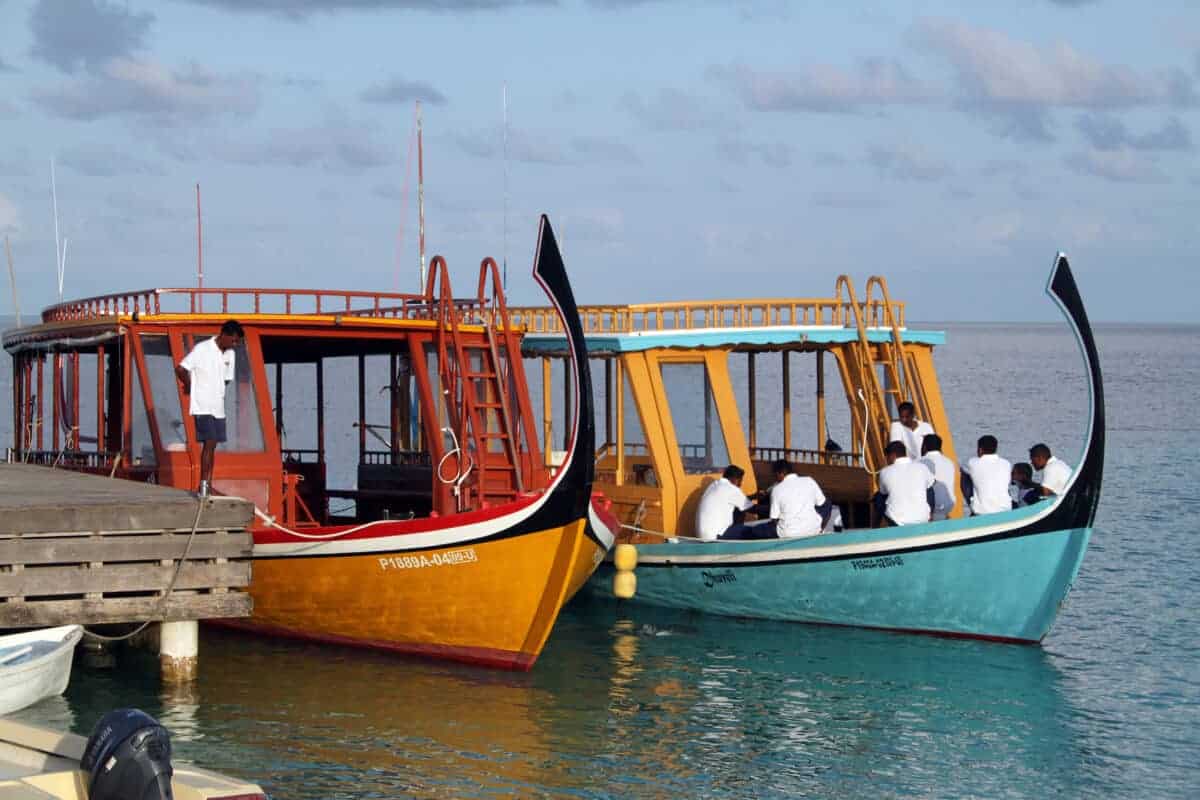
Throughout history, the Maldives has served as a crucial intersection in the Indian Ocean, welcoming a diverse array of travelers and traders over the centuries. This influx of visitors from various corners of the world has significantly influenced Maldivian culture, turning it into a rich melting pot of traditions and customs. The Maldivians have skillfully blended these diverse influences to forge a unique cultural identity of their own.
The cultural tapestry of the Maldives is intricately woven with threads of Indian, Sri Lankan, Malaysian, Arab, Persian, Indonesian, and even African heritage. This blend is reflected in the islands’ customs, cuisine, and daily life.
Adding to the charm of the Maldives is the warmth and friendliness of its people. Maldivians are known for their hospitable and welcoming nature, often going the extra mile to ensure visitors have an unforgettable experience. Their amiable demeanor is a hallmark of Maldivian culture, making a stay in the islands not just a journey through stunning landscapes but also a heartwarming encounter with its people.
Nature & Wildlife
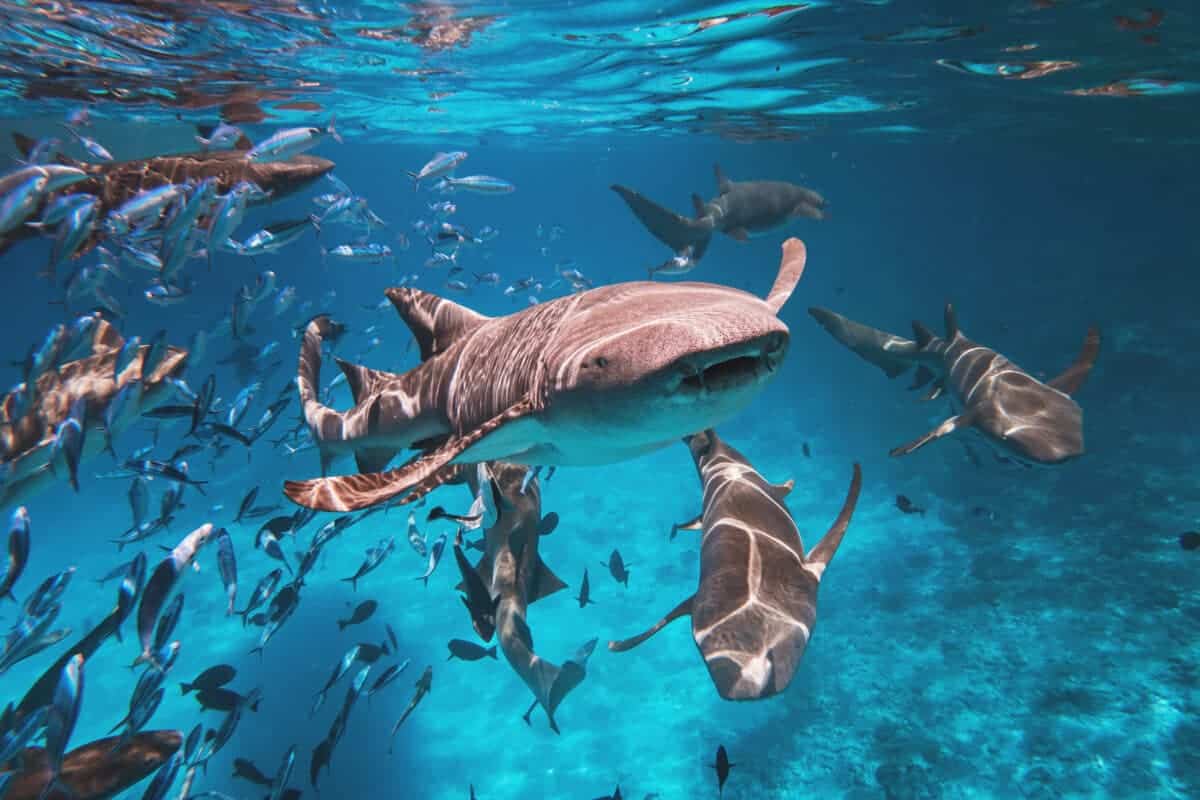
@Aneta p
Home to over 2,000 species of fish, the waters of the Maldives offer a kaleidoscope of aquatic life. This underwater paradise is inhabited by a fascinating array of creatures, including the graceful manta rays, the elusive stingrays, and the soaring eagle rays. The vibrant coral reefs serve as a haven for numerous types of anemones, hosting a mesmerizing world of jellyfish and other marine species. Each dive or snorkel in these waters provides a glimpse into a world brimming with color and life, making the Maldives not just a destination for relaxation, but also a haven for those passionate about exploring the wonders of the ocean.
Natural Attractions
We have collected some of the best attractions to encounter wildlife in the Maldives.
Hammerhead Point
Also known as Rasdhoo Madivaru, Hammerhead Point is a demanding dive on an outer reef where hammerhead sharks, mantas, and other large pelagics are frequent visitors.
Outside this reef, the depth drops rapidly to over 200m, and the water is evident. Hammerhead dives usually start before dawn, descending by around 6 am to have the best chance of sightings.
Lankan Manta Point
Lankan Manta Point, situated on the southeastern flank of North Male Atoll in the Maldives, is a renowned dive site that becomes particularly vibrant during the latter part of the southwest monsoon season, spanning from May to November. The site owes its name to its proximity to the island Lankanfinolhu, often translated as ‘Paradise’, and is famous for its manta ray cleaning stations.
Divers at Lankan Manta Point are treated to regular sightings of an array of marine life, including white-tip reef sharks, elegant eagle rays, the impressive humphead wrasse, swift barracudas, and the graceful hawksbill turtles.
But what exactly are manta cleaning stations? These are specific areas within the ocean where manta rays, along with other fish and sharks, visit to undergo a form of natural hygiene maintenance. Here, parasitic copepods and various species of small cleaner wrasse perform the vital role of cleaning the mantas. They meticulously attend to the manta rays’ gills, teeth, and skin. These cleaning stations are not just a curiosity but a crucial part of the ocean’s ecosystem, providing a unique spectacle where these magnificent creatures spend hours each day maintaining their health in this natural underwater spa.
Wildlife in the Maldives
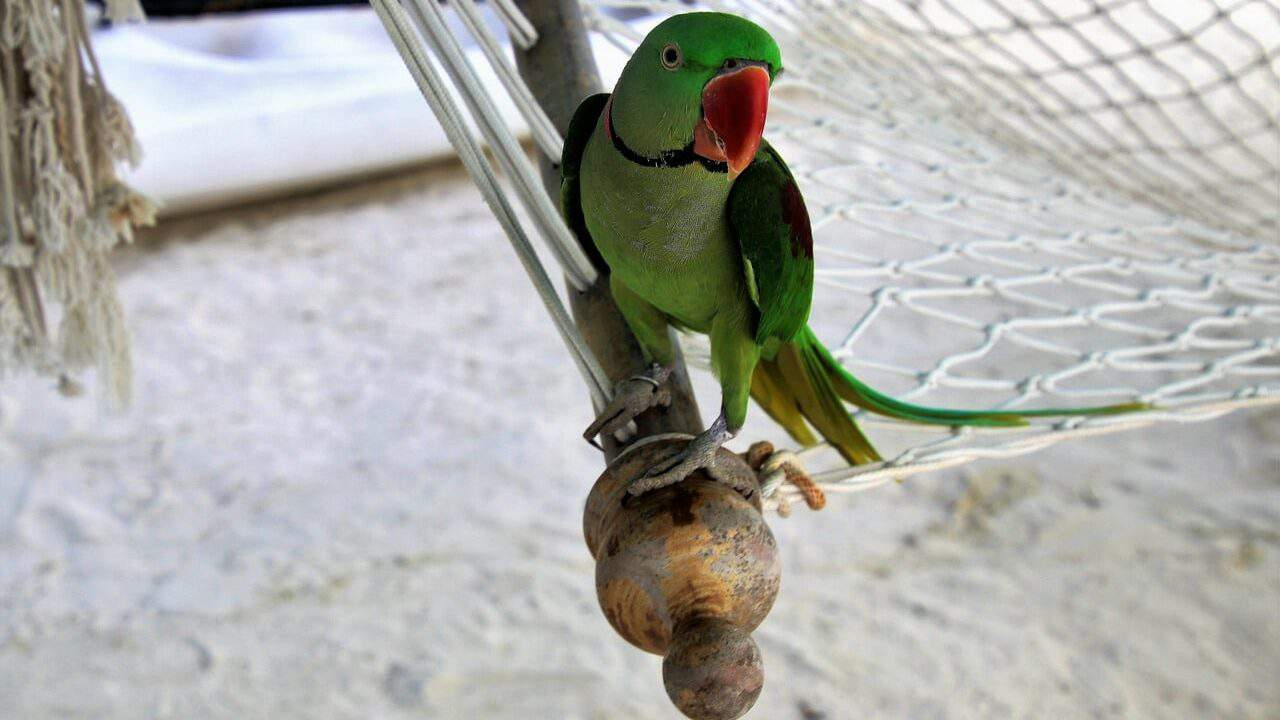
The wildlife of the Maldives is as diverse as it is fascinating, predominantly flourishing within its vast marine environment. The archipelago is home to a remarkable variety of marine species, including fruit bats, hammerhead sharks, whale sharks, various whales and dolphins, a plethora of reef sharks, and a multitude of turtles. The underwater world is also graced by manta rays, eagle rays, and an astonishing array of reef and marine fish, along with other marine life like octopuses, squid, clams, and giant clams. The waters around the islands are a treasure trove of biodiversity, hosting over 2,000 fish species, alongside numerous kinds of anemones and jellyfish.
On land, due to the small size and isolated nature of the islands, the Maldives has limited terrestrial wildlife. The land-based fauna is primarily composed of a few species, including one species of flying fox, one shrew species unique to the islands, a singular gecko species, and some snakes. There are no domestic dogs.
In the surrounding waters, whales and dolphins are a common sight, along with sea turtles such as the green turtle, the hawksbill turtle, and the leatherback turtle. The region also hosts various sea snakes and even saltwater crocodiles.
Bird life in the Maldives, much like its mammals and reptiles, is predominantly pelagic or oceanic, with sea birds being the most common avian inhabitants. This rich and diverse array of wildlife makes the Maldives not just a destination for sun and sand but a haven for nature enthusiasts and wildlife watchers.
Sharks
The Maldives archipelago, with its perfect water conditions and plentiful food supply, is a favored destination for various shark species. The islands are home to several types of reef sharks, known for their beauty and generally harmless nature to humans. These sharks are a popular attraction for tourists, who often have the opportunity to swim alongside them during scuba diving excursions in the Maldives.
While sharks can be spotted throughout the year, there is a specific period known as ‘shark season,’ which falls between January and March. This coincides with the Maldives’ dry season, characterized by calmer seas, making it an ideal time for shark sightings. However, some species, like the whale shark, grace the Maldivian waters year-round, offering a unique experience to visitors regardless of the season.
- Leopard Shark. Leopard Shark
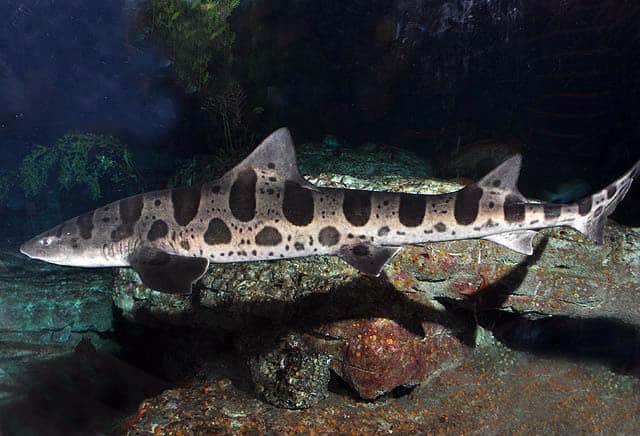
If you join a night snorkel/ dive, you might spot a Leopard shark (also known as a Zebra shark). One of the most stunning, but rarely sighted. They belong to a species of Carpet shark and can be found moving around the seabed, close to the coral reefs.
- Scalloped Hammerhead Shark
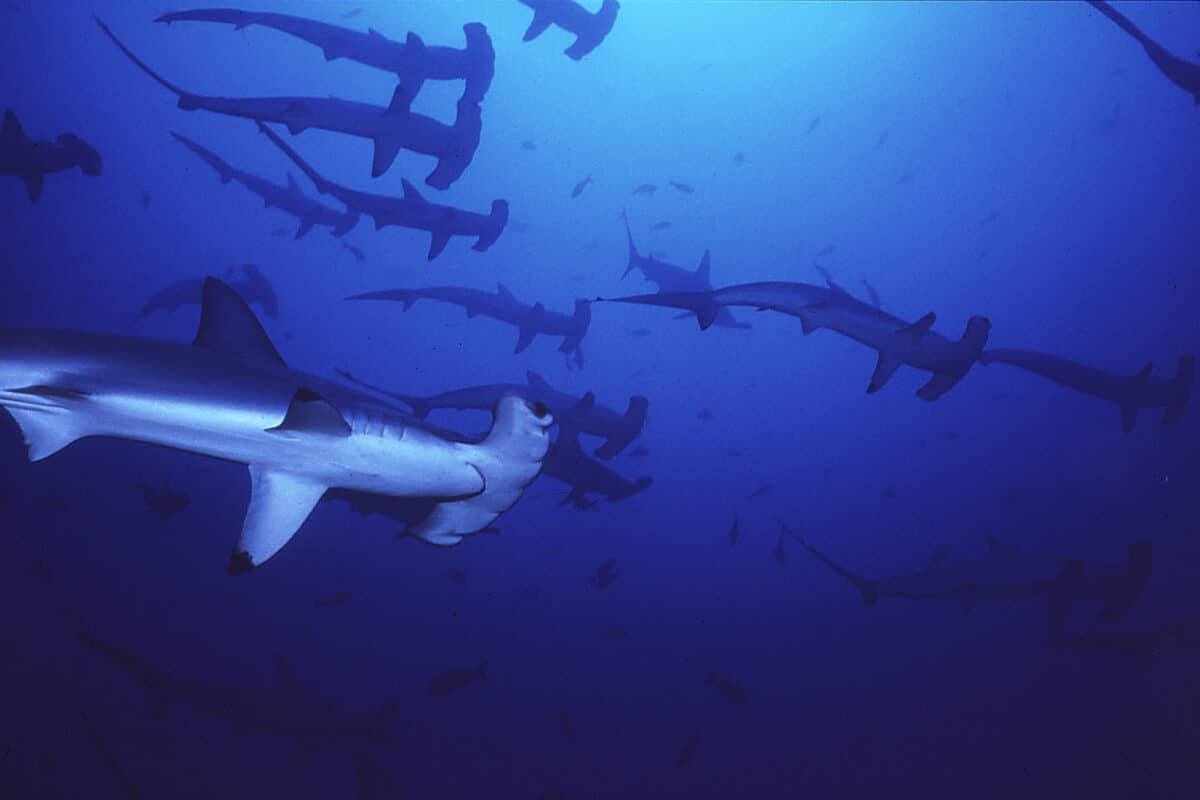
Divers do have a good chance of spotting scalloped hammerheads. They are medium-sized sharks with slightly scalloped and rounded front edge of their head. They are true carnivores and even feed on other sharks, but are very sfae to encounter from a respectful distance.
- Whale Shark
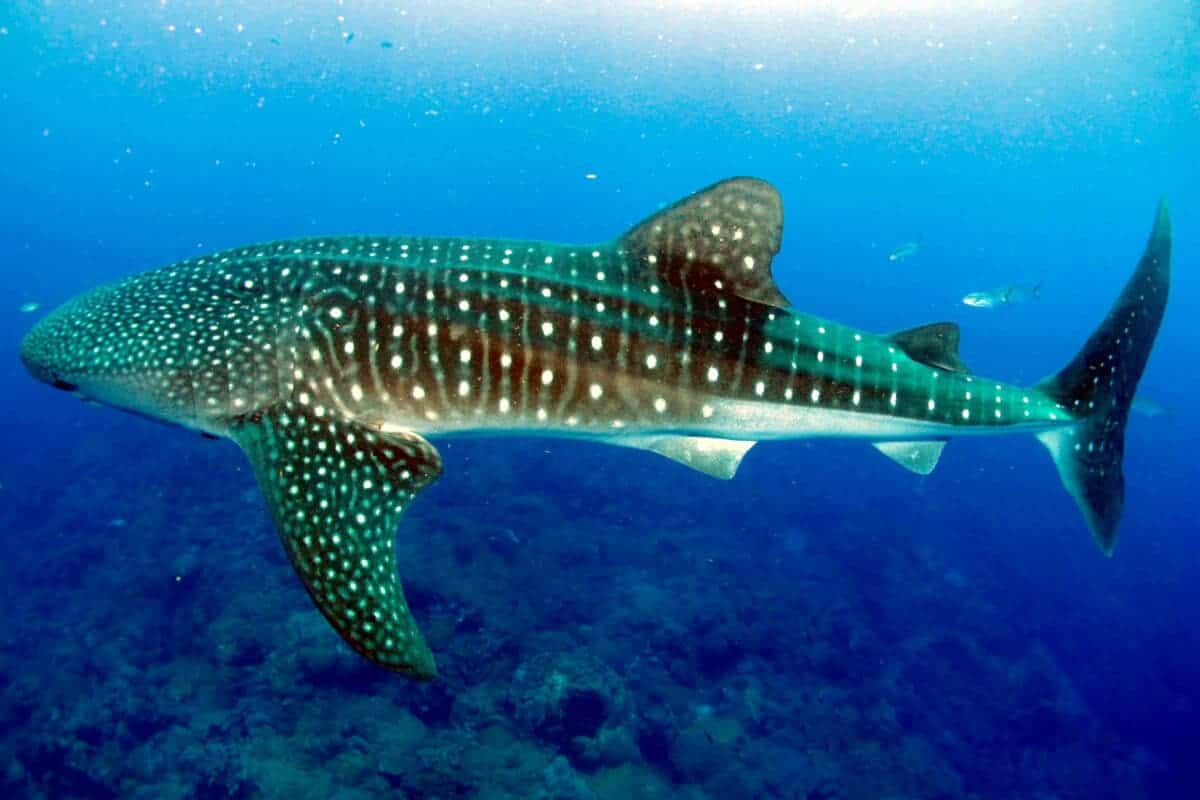
The best place to swim with whale sharks in the Maldives is the South Ari Atoll. They frequent the channel south of the atoll and can be spotted year-round. The best islands for whale shark tours are Dhigurah, Dhangethi and Maamigili.
These incredible sharks are abundant here, specifically in the waters off the South Ari Atoll.
Reef sharks
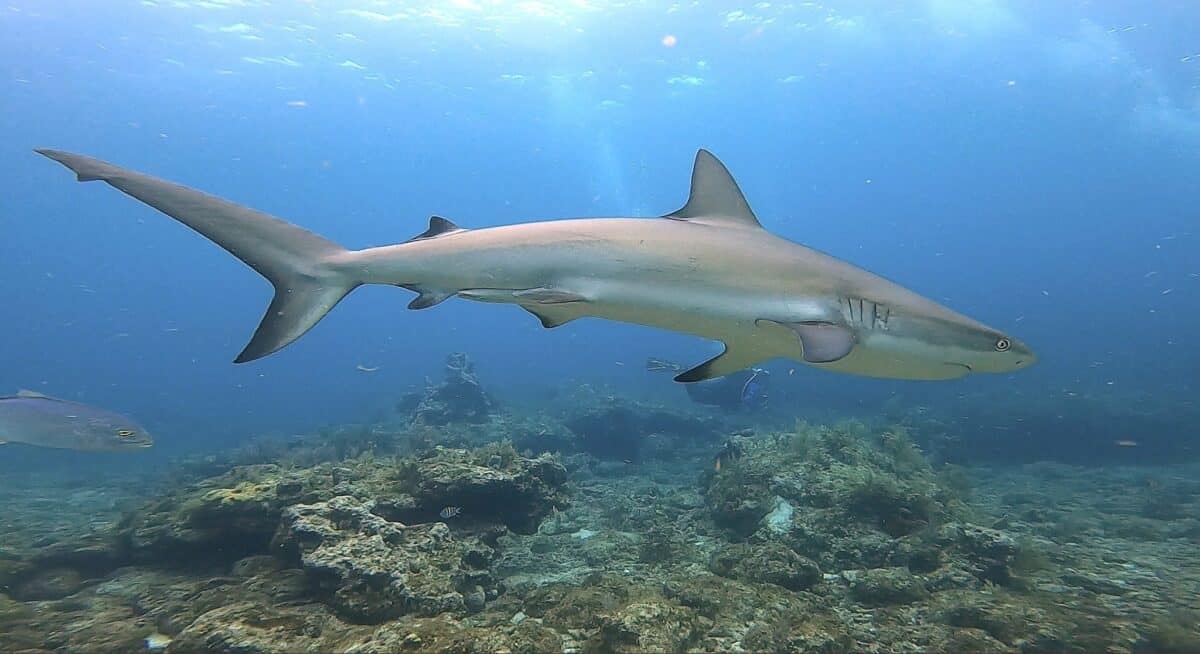
Off the reefs you may find hammerheads in Maldivian waters too, as well as graceful, spotted leopard sharks and sinister-looking – though harmless – blacktip reef sharks.
- Blacktip Reef Shark.
Blacktip reef sharks are some of the commonest shark species in the archipelago. They are medium-sized growing up to about 1.6 metres and they have black tips on most of their fins. These sharks live in shallow waters and feed on small fish and marine animals among the reefs.
- Grey Reef Shark.
Grey reef sharks that spend time in shallow water eventually darken in color, due to tanning.
- White Tip Reef Shark
The Whitetip Reef Shark is demersal on the continental shelves and around oceanic islands and reefs at depths of 0–330 m. Whitetip reef sharks are rarely aggressive towards humans, though they may investigate swimmers closely.
Conservation concerns
In 2010, a shark sanctuary was implemented in the Maldives when the declining status of shark fisheries and concerns over decreased shark sightings from divers encouraged the government to ban shark fisheries in its waters.
You can support and volunteer at the Maldives Whaleshark research program.
Turtles
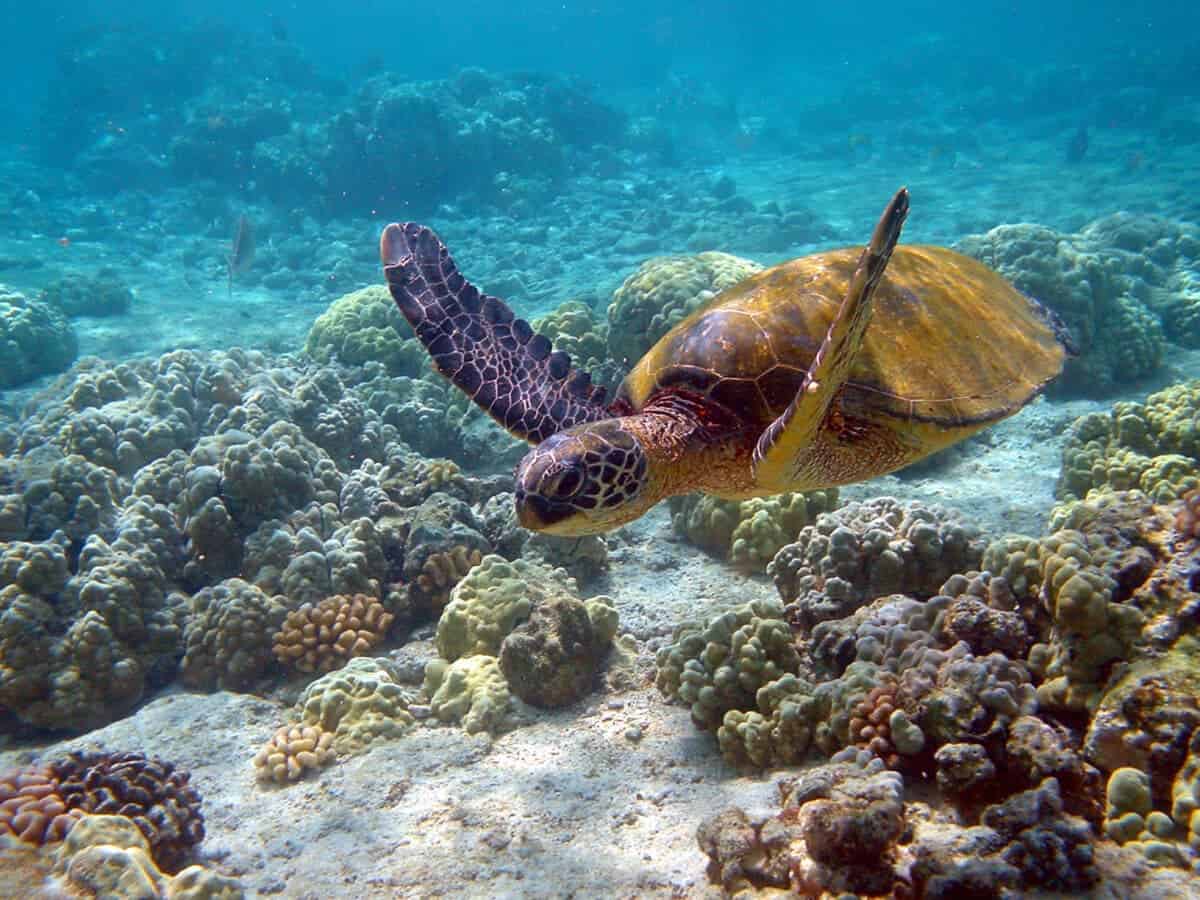
You will find different categories of turtles, endemic to the wildlife in the Maldives, including Green turtles, leatherback turtle, hawksbill turtle, and many more. Almost half of all the identified green sea turtles in the Maldives live in Lhaviyani Atoll, and nearly all of them can be found around Kuredu.
The Maldives is home to five of the world’s seven sea turtles, two of which are regularly seen, namely the critically endangered hawksbill turtle (Eretmochelys imbricata), and the endangered green turtle (Chelonia mydas).0
Stingrays
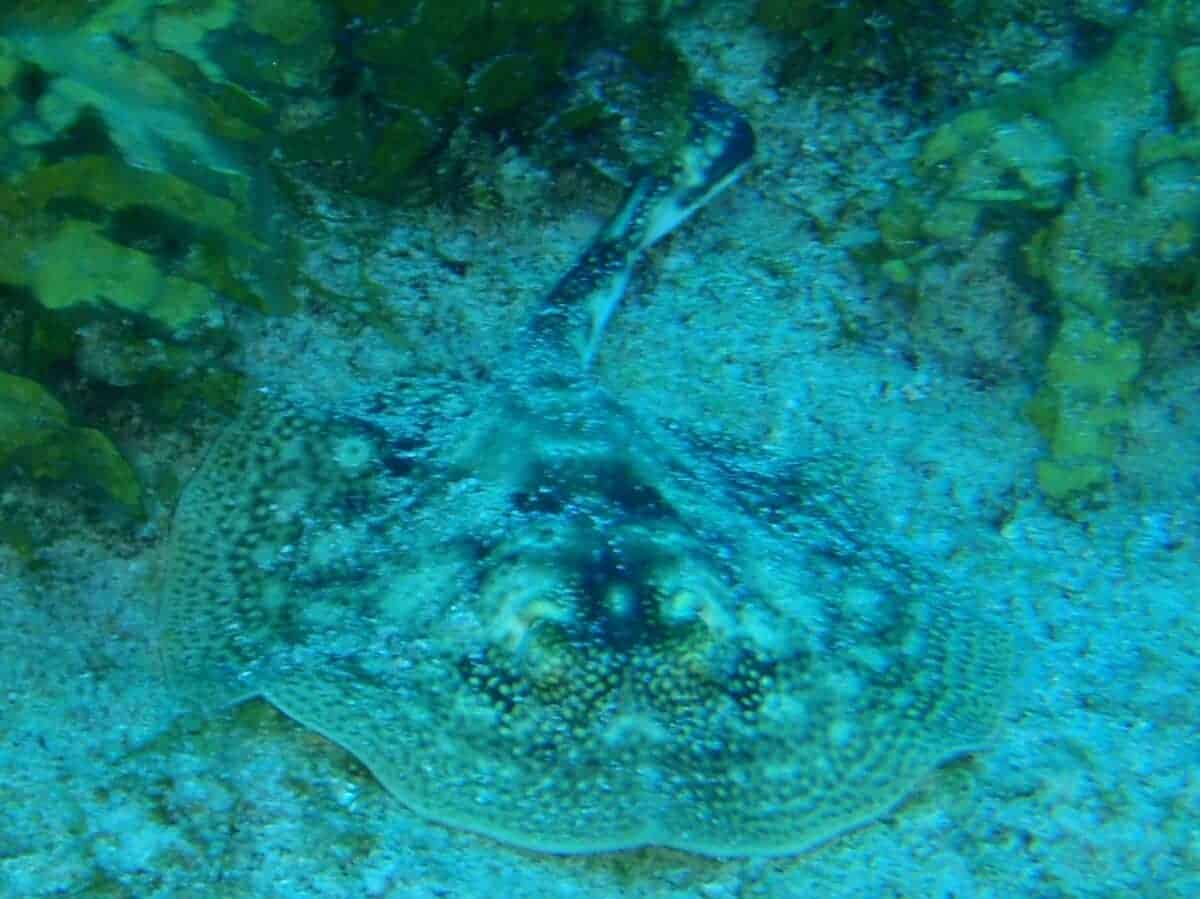
In addition to stingrays, the waters around the Maldives are frequented by eagle rays and various other ray species. Observing these magnificent creatures is a common and rewarding experience, best enjoyed from a safe and respectful distance.
Manta rays, a highlight of the Maldivian marine life, follow a seasonal pattern in their appearances. From November to April, they are predominantly found on the western side of the atolls, while from May to October, they migrate to the eastern side. This seasonal movement offers visitors a unique opportunity to witness these graceful giants in different parts of the Maldives throughout the year.
Dolphins
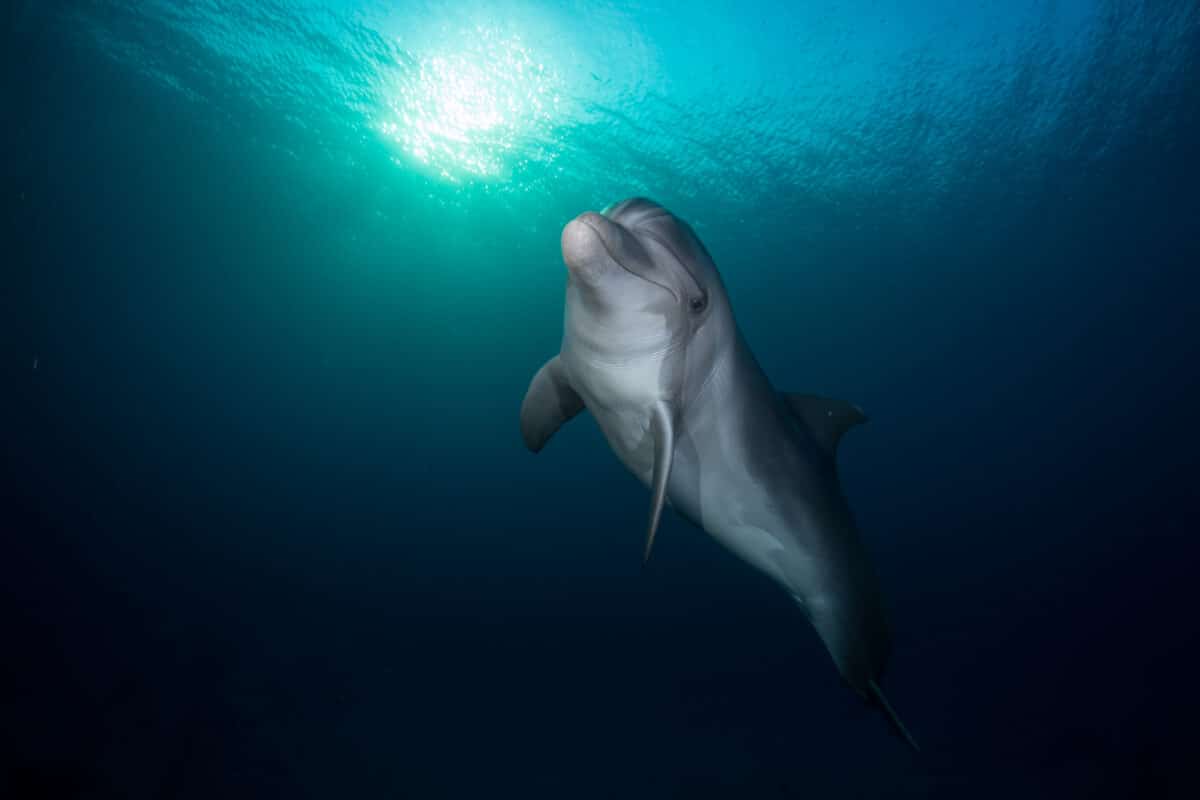
The Maldives is celebrated for its crystal-clear waters, providing an ideal setting for effortlessly spotting dolphins and other marine creatures. The visibility in these pristine waters makes it a delight to observe dolphins, which are known for their friendly and playful nature.
The region is a hotspot for a diverse array of dolphin species, including the Fraser’s, Risso’s, Spinner, bottlenose, and spotted dolphins, among others. One of the lesser-known yet exceptional locations for dolphin watching in the Maldives is the Muli Channel in Meemu Atoll. Though not widely discussed, this area is recognized as one of the best spots for encountering these joyful marine mammals.
In terms of accommodation, Meemu Atoll houses two resorts: Medhufushi Island Resort and Hakuraa Hura. These provide excellent bases for exploring the atoll’s natural beauty and for embarking on memorable dolphin-watching experiences in the serene waters of the Maldives.
Coral Reef
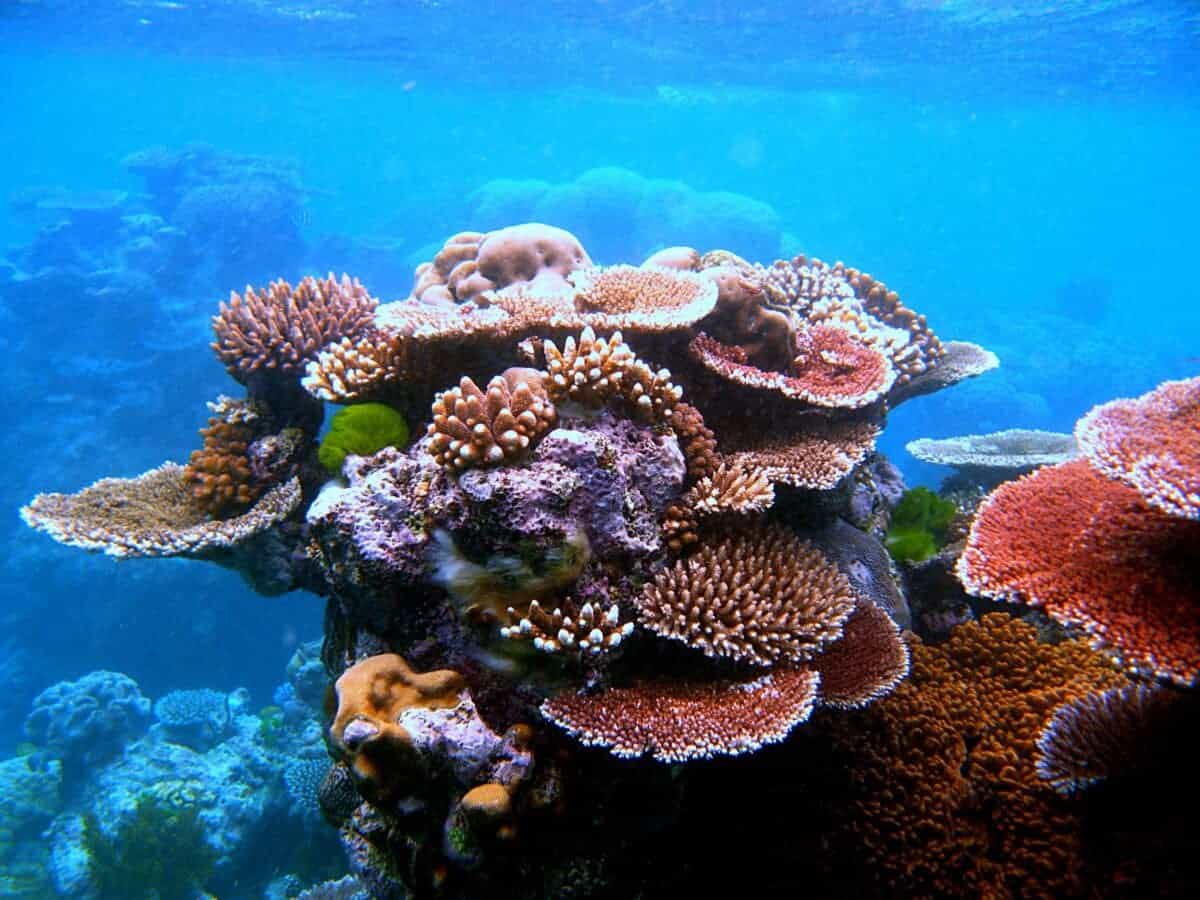
A visit to the Maldives is a journey into an underwater wonderland, highlighted by the archipelago’s extensive coral reef systems. Here, you can explore more than 2,000 individual coral reefs, each teeming with life and color.
The Maldives atolls are part of a vast underwater mountain range that extends over 2,000 km, starting from the Laccadive Islands in the north to the Chagos Islands in the south. This expansive marine landscape creates a unique and rich habitat for an array of sea life.
Coral Reef Conservation Status
When the temperature of seawater rises even slightly above the average seasonal maximum – by a mere one degree Celsius – and remains high over an extended period, it can significantly disrupt the functioning of coral reefs. This sensitivity to temperature changes poses a substantial threat to the pristine marine ecosystems of the Maldives. Climate change and its associated impacts, particularly coral bleaching, are major natural challenges facing these ecosystems.
In addition to natural factors, human activities also pose significant threats to the Maldives’ marine environment. The burgeoning tourism industry and the over-exploitation of marine resources, often carried out without proper regard for biodiversity, are contributing to the degradation of these delicate ecosystems. Balancing environmental sustainability with economic activities is crucial to preserving the Maldives’ unique and valuable coral reefs.
Flying Fox/ Fruit Bats
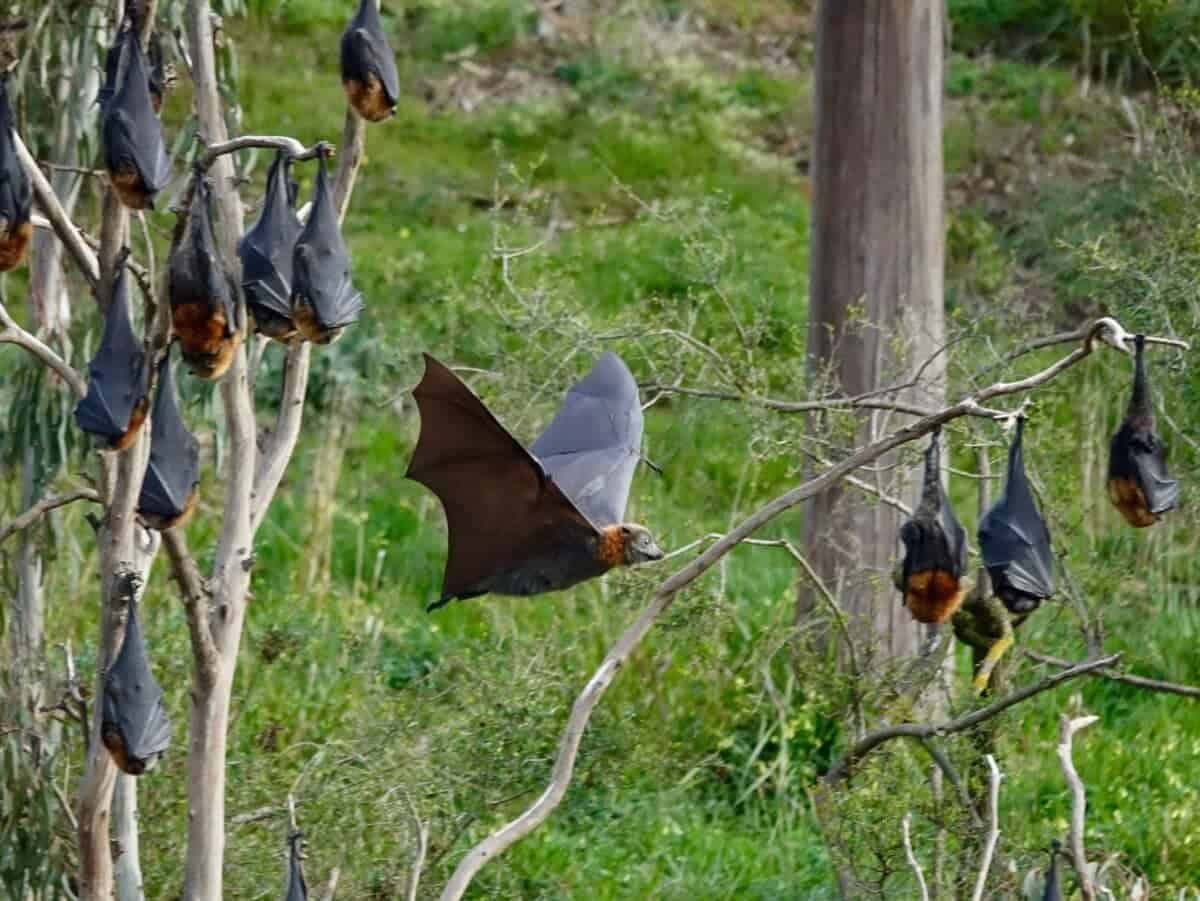
In the jungle areas of the island, you’ll frequently encounter the sight of fruit bats, also known as flying foxes, harmlessly hanging from trees. These bats primarily feed on fruit juice and flower nectar. They have an interesting feeding habit where they chew the fruit to consume its juice and then spit out the seeds, peel, and pulp.
As you explore the island, you’ll notice fruit bats are a common sight, easily spotted in various locations. Their distinctive squeaking noise is hard to miss and often draws the attention of visitors. These flying foxes are particularly noticeable around dusk when they gracefully swoop down from the treetops to sip water from pools.
Fruit bats in the Maldives are among the largest bat species globally, boasting an impressive wingspan of up to 1.5 meters. Their size and unique behavior make them a fascinating aspect of the local wildlife, capturing the interest of both residents and visitors alike.
Bird Life
Over 167 species of bird can be found endemic to the islands of the Maldives. The national bird is the White-breasted waterhen/ Kanbili. The most commonly seen sea birds are herons, cranes and seagulls. There are more than 12 species of herons, the most common being the grey heron.
Operators
Jerry’s Dive Club, Rasdhoo. Offering customizable scuba training experiences with endemic Maldivian wildlife.
Dive into the finest scuba diving experience at Rasdhoo, Maldives! Our diving experts have tremendous experience assisting people in experiencing life under the sea. Rasdhoo Diving is not only a magical experience but an entry ticket to a whole new world. You may as well learn from the best in the Maldives.
Summary of Wildlife in the Maldives
The Maldives is far more than just white, idyllic beaches and clear waters… It is home to countless marine life, bold southeastern culture and cuisine, hospitality, and endless opportunities for tourism, wildlife encounter, and discoveries.
For similar reading, look at wildlife in Thailand and the top 10 wildlife encounters or Shark Encounter Shakes Atlantis Resort in the Bahamas. Which of these animals do you want to visit the most?
Frequently ASked Questions (FAQs)
The Maldives is famous for its stunning natural beauty, including white sandy beaches, crystal-clear blue waters, vibrant coral reefs, and abundant marine life. It’s a popular destination for honeymooners, scuba divers, and those seeking relaxation in a tropical paradise.
The oceans around the Maldives are teeming with marine life. You can encounter various species of fish, including manta rays, eagle rays, whale sharks, reef sharks, dolphins, sea turtles, and various types of colorful reef fish.
The Maldives has limited land-based wildlife due to its small size. Some of the land animals you might encounter include fruit bats (flying foxes), geckos, and a few other reptiles. There are no native land mammals except for a few bat species.
The stunning blue color of the Maldives’ waters is primarily due to the clear and clean nature of the ocean, as well as the shallow depths in the surrounding areas. The water’s color is influenced by sunlight penetration and the reflection of sunlight off the white sandy bottom
- Animals and Wildlife in Colorado - April 24, 2024
- Best Places to see Sloths - April 24, 2024
- Where to See Alligators in the Wild - April 24, 2024

